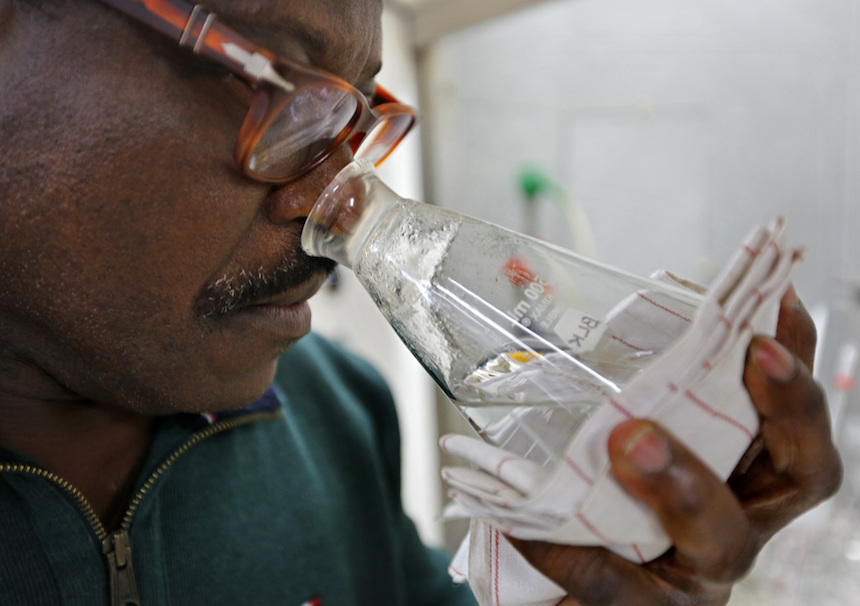
The extensive growth of sensory analysis techniques in the food and beverage industries starting in the 1940s led to an international explosion of research on the taste and odor of drinking water. Despite the number of traditional approaches to the sensory evaluation of drinking water in use today, there is a need for ongoing improvements. In general, careful attention must be given to guard against the many factors that can influence sensory evaluation results. This article describes the challenges of performing human sensory analyses of water and presents data from nonwater organoleptic studies in improving procedures for using humans to assess water quality.
Many variables must be considered when using humans to perform sensory testing, including interference from the testing environment; the health, gender, age, and mood of the assessors; sensory fatigue; and assesors’ attempts to please the examiner. Although adaptation to odors can occur at times, repeated exposure to an odorant can increase sensitivity. Moreover, continued exposure to one odorant can influence sensitivity to another odorant, a phenomenon known as “cross-adaptation.” In addition, an aversion to an odor can heighten a person’s sensitivity to that odor.
Important findings from taste and odor studies include the following: women, on average, identify odors better than men; a substantial genetic influence exists on the ability to identify odors; a major loss of smell function occurs in later life; smoking behavior adversely influences olfactory function; the ability to smell is compromised in many urban residents of highly polluted cities; and smell dysfunction is a common feature of a number of rhinological and neurological diseases, most notably Alzheimer’s and Parkinson’s. Other lessons learned from taste studies are that women are more sensitive than men to a number of tastants; repeated experience with testing lowers taste thresholds; bodily processes can influence some taste thresholds in a selective manner; and, as with olfaction, taste dysfunction is present in some diseases.
A multitude of errors can enter into the design and administration of chemosensory tests that can affect their validity and reliability. These are expectation error; error of habituation; stimulus error; logical error; halo effect; and confounders from the order of sample presentation including contrast effects, group effects, errors of central tendency, and pattern effects. Study design techniques are critical for reducing these biases; such techniques include randomizing or counterbalancing the order of sample presentation, maintaining a constant environment across testing sessions, and carefully interpreting and statistically evaluating the resultant sensory test data. However, even when well-established procedures for selecting assessors, and designing and administering the test are used, and statistical analyses are in place, careful review is still needed to guard against the myriad influences from factors that can increase variability and affect human sensory measurements.
Humans are unique as sensory assessors; they provide data that cannot be obtained by laboratory instrumentation. There is untapped potential in using semitrained employees to monitor the aesthetic quality of drinking water. In addition, water suppliers can make better use of customer complaints and social media data related to the sensory properties of drinking water. Considering the potential capabilities of human sensory studies to provide valuable information on the aesthetic quality of water, and the reality that human sensory testing cannot be fully replaced by nonhuman approaches, the drinking water industry needs to continue building upon its experience and resources for sensory analyses. In the food and beverage industries, there are courses for training in the use of sensory tests and consumer studies that cover the many factors addressed in this article. A valuable partnership between the drinking water community and the sensory testing resources of the food and beverage industry, as well as academia, could be valuable in enhancing and providing ongoing services for addressing the taste and odor quality of public drinking water.
Corresponding author: Gary A. Burlingame is director, Bureau of Laboratory Services, Philadelphia Water Department.

